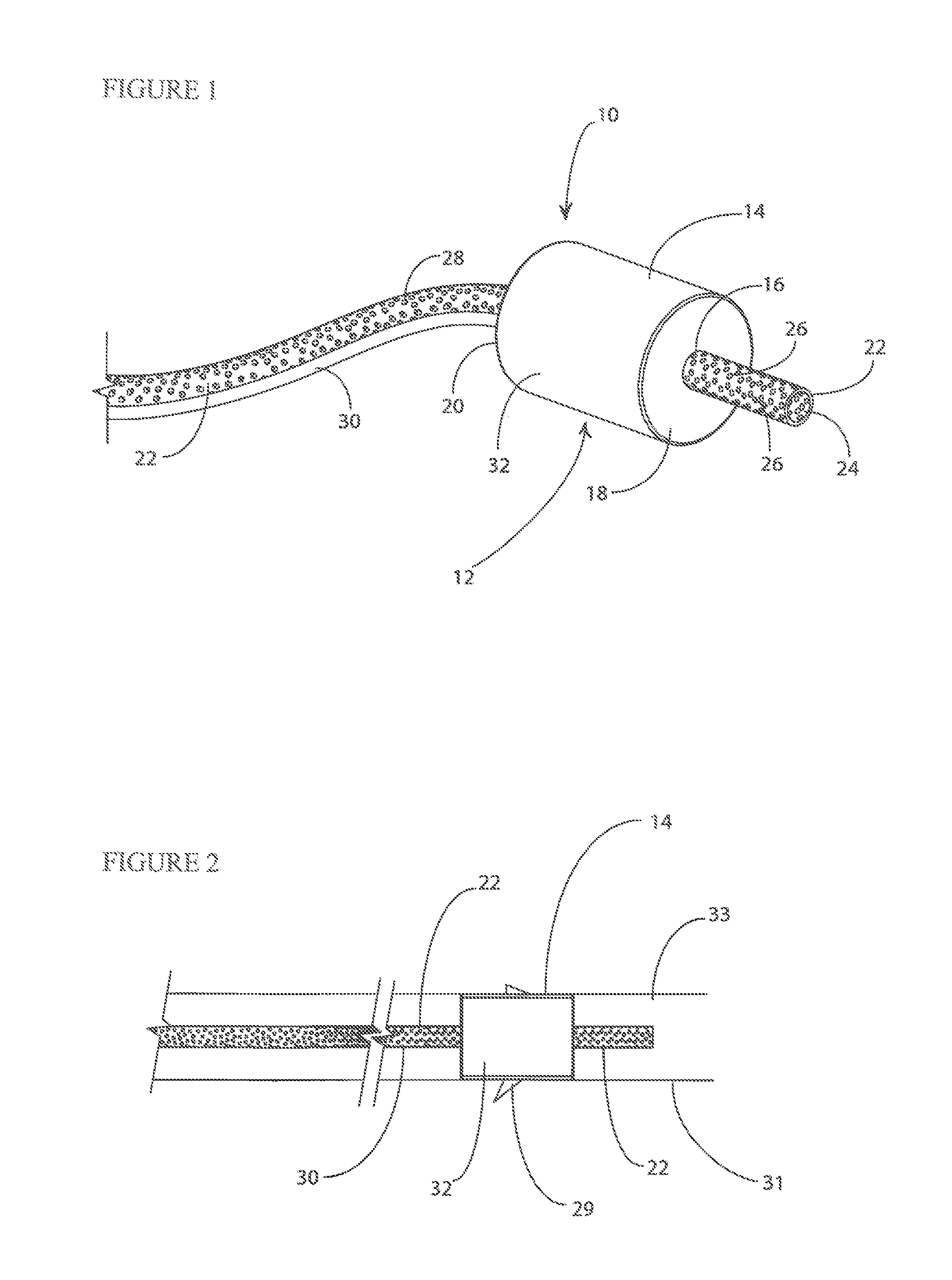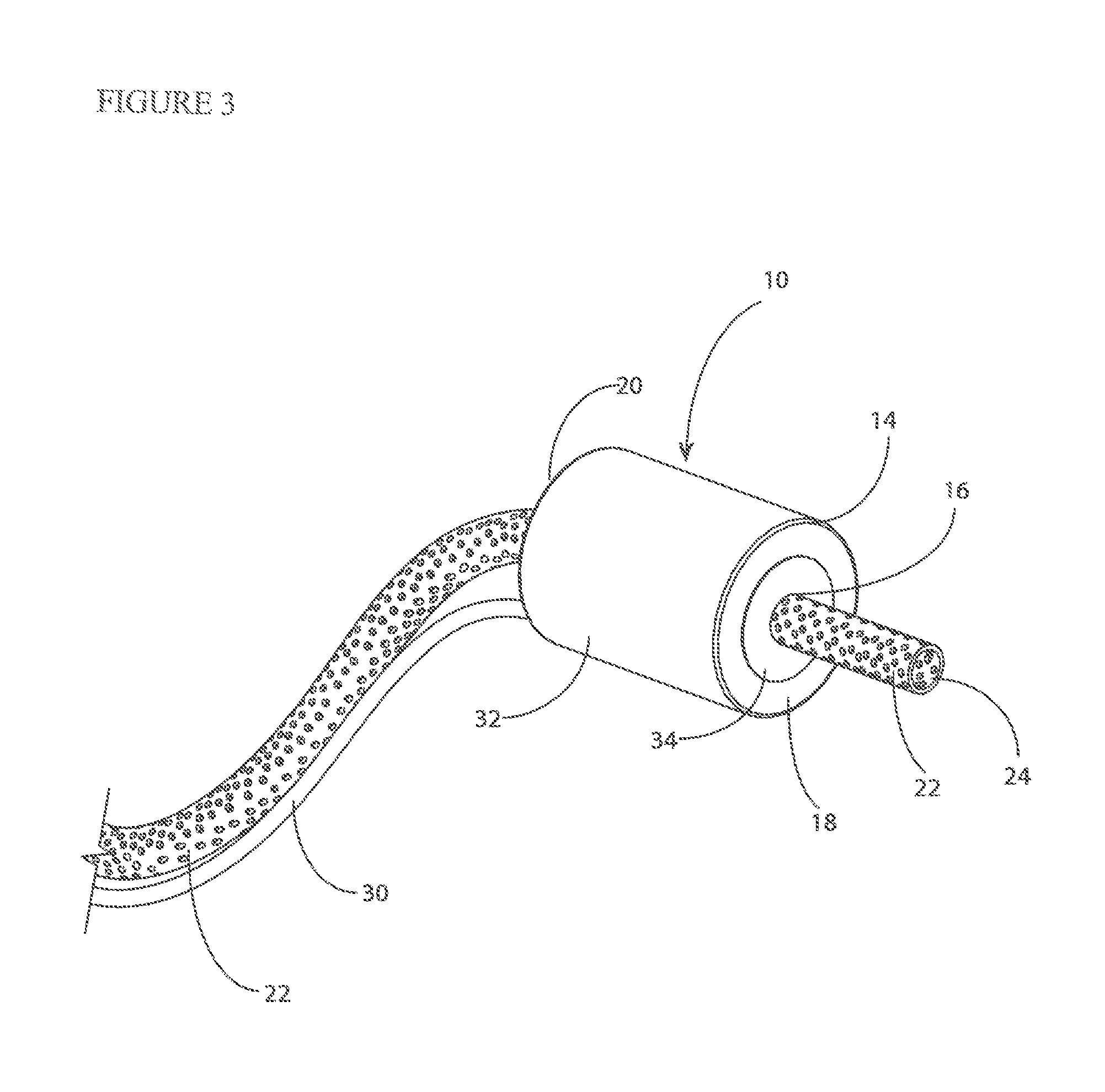Device for use in endoluminal vacuum therapy
a vacuum therapy and endoluminal technology, applied in the field of endoluminal vacuum therapy devices, can solve the problems of compounding leakage risk, increasing the financial burden involved in treatment, and a large proportion of health and hospital costs, so as to associated morbidity and mortality, reduce the risk of anastomotic leakage, and improve the healing rate of wounds.
- Summary
- Abstract
- Description
- Claims
- Application Information
AI Technical Summary
Benefits of technology
Problems solved by technology
Method used
Image
Examples
example 1
Healing of Rectal Anastomotic Leaks in a Swine Model
[0079]Low anterior resection has a leak rate of 8-24%, which carries significant potential morbidity and mortality. A diverting ileostomy is often used for high-risk anastomoses, but its creation and reversal can carry additional morbidity and surgical risk. Thus, an alternative method was sought to manage anastomotic complications after rectal surgery. Negative pressure therapy has been used in superficial wounds but to the knowledge of the inventor, has not previously been used to benefit anastomoses. Of concern is the fecal stream through the anastomosis and to provide for this the inventor developed a negative pressure endoluminal vacuum technology with a diverting proximal sump system. The study described below evaluates the use of such a device in low rectal anastomoses in a swine model.
1.1 Overview
[0080]After bowel prep, all pigs underwent rectal resection with primary anastomosis.
[0081]A 2 cm defect was then created in the ...
example 2
Further Swine Animal Model Study
[0108]In another study employing the same animal model described above in Example 1, a low rectal anastomoses in a single pig was treated for 5 days with an endoVAC device that was not provided with a drainage tube 22. That is, the endoVAC device simply comprised an unsealed sponge without a longitudinal through passageway wherein suction was applied to the sponge by a suction tube 30. However, the sponge became contaminated with faecal matter and suction to the sponge was lost resulting in the anastomosis failing to heal and a consequential uncontained leak from the anastomosis (Pig 9, Table 1).
[0109]From the above description of the invention it will be understood that a device embodied by the invention may be used to reduce or prevent leaking from a wound in a method of the invention. The wound may, for example, be an anastomosis resulting from surgery. In at least some embodiments the wound treated in accordance with a method of the invention can ...
PUM
 Login to View More
Login to View More Abstract
Description
Claims
Application Information
 Login to View More
Login to View More - R&D
- Intellectual Property
- Life Sciences
- Materials
- Tech Scout
- Unparalleled Data Quality
- Higher Quality Content
- 60% Fewer Hallucinations
Browse by: Latest US Patents, China's latest patents, Technical Efficacy Thesaurus, Application Domain, Technology Topic, Popular Technical Reports.
© 2025 PatSnap. All rights reserved.Legal|Privacy policy|Modern Slavery Act Transparency Statement|Sitemap|About US| Contact US: help@patsnap.com



